Lawrence of Arabia The Battle For The Arab World — Videos
PBS. Lawrence of Arabia The Battle For The Arab World 1 of 2
PBS. Lawrence of Arabia The Battle For The Arab World 2 of 2
Read Full Post | Make a Comment ( None so far )
T.E. Lawrence and Lawrence of Arabia — Photos and Videos
T E Lawrence and Arabia. BBC documentary pt 1 of 7
T E Lawrence and Arabia. BBC documentary pt 2 of 7
T E Lawrence and Arabia. BBC documentary pt 3 of 7
T E Lawrence and Arabia. BBC documentary pt 4 of 7
T E Lawrence and Arabia. BBC documentary pt 5 of 7
T E Lawrence and Arabia. BBC documentary pt 6 of 7
T E Lawrence and Arabia. BBC documentary pt 7 of 7
Lawrence of Arabia part 1
Lawrence of Arabia : part 2
T. E. Lawrence – Wiki Article
Scott Anderson on Lawrence in Arabia
T.E. Lawrence
Thomas Edward Lawrence, CB, DSO (16 August 1888[5] – 19 May 1935), known professionally as T. E. Lawrence, was a British Army officer renowned especially for his liaison role during the Sinai and Palestine Campaign and the Arab Revolt against Ottoman Turkish rule of 1916–18. The breadth and variety of his activities and associations, and his ability to describe them vividly in writing, earned him international fame as Lawrence of Arabia, a title which was used for the 1962 film based on his World War I activities.
Lawrence was born illegitimate in Tremadog, Wales, in August 1888 to Sir Thomas Chapman and Sarah Junner, a governess who was herself illegitimate. Chapman had left his wife and first family in Ireland to live with Sarah Junner, and they called themselves Mr and Mrs Lawrence. In the summer of 1896 the Lawrences moved to Oxford, where in 1907–10 young Lawrence studied history at Jesus College, graduating with First Class Honours. He became a practising archaeologist in the Middle East, working at various excavations with David George Hogarth and Leonard Woolley. In 1908 he joined the Oxford University Officer Training Corps, undergoing a two-year training course.[6] In January 1914, before the outbreak of World War I, Lawrence was co-opted by the British Army to undertake a military survey of the Negev Desertwhile doing archaeological research.
Lawrence’s public image resulted in part from the sensationalised reportage of the revolt by an American journalist, Lowell Thomas, as well as from Lawrence’s autobiographical account, Seven Pillars of Wisdom (1922). In 1935, he was fatally injured in a motorbike crash in Dorset.
Early life
T. E. Lawrence’s birthplace, Gorphwysfa, now known as Snowdon Lodge.[7]
Lawrence was born on 16 August 1888 in Tremadog, Caernarfonshire (nowGwynedd), Wales, in a house named Gorphwysfa, now known as Snowdon Lodge.[8]His Anglo-Irish father, Thomas Robert Tighe Chapman, who in 1914 inherited the title of Westmeath in Ireland as seventh Baronet, had left his wife Edith for his daughters’governess Sarah Junner. Junner’s mother, Elizabeth Junner, had named as Sarah’s father a “John Junner — shipwright journeyman”, though she had been living as an unmarried servant in the household of a John Lawrence, ship’s carpenter, just four months earlier.[9][10]
Thomas Chapman and Sarah Junner did not marry, but were known as Mr and Mrs Lawrence. They had five sons, of whom Thomas Edward was the second eldest. From Wales the family moved to Kirkcudbright in Dumfries and Galloway, then Dinard in Brittany, then to Jersey. In 1894–96 the family lived at Langley Lodge (now demolished), set in private woods between the eastern borders of the New Forest and Southampton Water in Hampshire. Mr Lawrence sailed and took the boys to watch yacht racing in the Solent off Lepe beach. By the time they left, the eight-year-old Ned (as Lawrence became known) had developed a taste for the countryside and outdoor activities.

Lawrence memorial plaque atOxford Boys’ High School
In the summer of 1896 the Lawrences moved to 2 Polstead Road in Oxford, where, until 1921, they lived under the names of Mr and Mrs Lawrence. Lawrence attended the City of Oxford High School for Boys, where one of the four houses was later named “Lawrence” in his honour; the school closed in 1966.[11] As a schoolboy, one of his favourite pastimes was to cycle to country churches and make brass rubbings. Lawrence and one of his brothers became commissioned officers in the Church Lads’ Brigade at St Aldate’s Church.
Lawrence claimed that in about 1905, he ran away from home and served for a few weeks as a boy soldier with the Royal Garrison Artillery at St Mawes Castle in Cornwall, from which he was bought out. No evidence of this can be found in army records.[12]
Middle East archaeology
At the age of 15 Lawrence and his schoolfriend Cyril Beeson bicycled around Berkshire, Buckinghamshire and Oxfordshire, visited almost every village’s parish church, studied their monuments and antiquities and made rubbings of their monumental brasses.[13] Lawrence and Beeson monitored building sites in Oxford and presented their finds to the Ashmolean Museum.[13] The Ashmolean’s Annual Report for 1906 said that the two teenage boys “by incessant watchfulness secured everything of antiquarian value which has been found”.[13] In the summers of 1906 and 1907 Lawrence and Beeson toured France by bicycle, collecting photographs, drawings and measurements of medieval castles.[13]
From 1907 to 1910 Lawrence studied history at Jesus College, Oxford.[14] In the summer of 1909 Lawrence set out alone on a three-month walking tour of crusader castles inOttoman Syria, in which he travelled 1,000 mi (1,600 km) on foot. Lawrence graduated with First Class Honours after submitting a thesis entitled The influence of the Crusades on European Military Architecture—to the end of the 12th century based on his field research with Beeson in France,[13] notably in Châlus, and his solo research in the Middle East.[15]

Leonard Woolley (left) and T. E. Lawrence at Carchemish, ca. 1912
On completing his degree in 1910, Lawrence commenced postgraduate research in medieval pottery with a Senior Demy, a form of scholarship, at Magdalen College, Oxford, which he abandoned after he was offered the opportunity to become a practising archaeologist in the Middle East. Lawrence was a polyglot whose published work demonstrates competence in French, Ancient Greek, and Arabic.

T. E. Lawrence and Leonard Woolley(right) at Carchemish, spring 1913
In December 1910 he sailed for Beirut, and on arrival went to Jbail (Byblos), where he studiedArabic. He then went to work on the excavations at Carchemish, near Jerablus in northern Syria, where he worked under D. G. Hogarth and R. Campbell Thompson of the British Museum. He would later state that everything that he had accomplished, he owed to Hogarth.[16] As the site lay near an important crossing on the Baghdad Railway, knowledge gathered there was of considerable importance to the military. While excavating ancientMesopotamian sites, Lawrence met Gertrude Bell, who was to influence him during his time in the Middle East.
In late 1911, Lawrence returned to England for a brief sojourn. By November he was en route to Beirut for a second season at Carchemish, where he was to work with Leonard Woolley. Before resuming work there, however, he briefly worked with Flinders Petrie at Kafr Ammar inEgypt.
Lawrence continued making trips to the Middle East as a field archaeologist until the outbreak of the First World War. In January 1914, Woolley and Lawrence were co-opted by the British military as an archaeological smokescreen for a British military survey of the Negev Desert. They were funded by the Palestine Exploration Fund to search for an area referred to in the Bible as the “Wilderness of Zin“; along the way, they undertook an archaeological survey of the Negev Desert. The Negev was of strategic importance, as it would have to be crossed by any Ottoman army attacking Egypt in the event of war. Woolley and Lawrence subsequently published a report of the expedition’s archaeological findings,[17] but a more important result was an updated mapping of the area, with special attention to features of military relevance such as water sources. Lawrence also visited Aqaba and Petra.
From March to May 1914, Lawrence worked again at Carchemish. Following the outbreak of hostilities in August 1914, Lawrence did not immediately enlist in the British Army; on the advice of S.F. Newcombe he held back until October, when he was commissioned on the General List; and immediately posted to the intelligence staff in Cairo.
Arab revolt
At the outbreak of the First World War Lawrence was a university post-graduate researcher who had for years travelled extensively within the Ottoman Empire provinces of the Levant (Transjordan and Palestine) and Mesopotamia (Syria and Iraq) under his own name. As such he had become known to the Ottoman Interior Ministry authorities and their German technical advisers, travelling on the German-designed, built, and financed railways during the course of his research.[18]
The Arab Bureau of Britain’s Foreign Office conceived a campaign of internal insurgency against the Ottoman Empire in the Middle East. The Arab Bureau had long felt it likely that a campaign instigated and financed by outside powers, supporting the breakaway-minded tribes and regional challengers to the Turkish government’s centralised rule of their empire, would pay great dividends in the diversion of effort that would be needed to meet such a challenge. The Arab Bureau had recognised the strategic value of what is today called the “asymmetry” of such conflict. The Ottoman authorities would have to devote from a hundred to a thousand times the resources to contain the threat of such an internal rebellion compared to the Allies’ cost of sponsoring it.
With his first-hand knowledge of Syria, the Levant, and Mesopotamia (not to mention having already worked as a part-time civilian army intelligence officer), on his formal enlistment in 1914 Lawrence was posted to Cairo on the Intelligence Staff of the GOC Middle East.[19]The British government in Egypt sent Lawrence to work with the Hashemite forces in the Arabian Hejaz in October 1916.[20]
During the war, Lawrence fought with Arab irregular troops under the command of Emir Faisal, a son of Sherif Hussein of Mecca, in extended guerrilla operations against the armed forces of the Ottoman Empire. Lawrence obtained assistance from the Royal Navy to turn back an Ottoman attack on Yenbu in December 1916.[20] Lawrence’s major contribution to the revolt was convincing the Arab leaders (Faisal and Abdullah) to co-ordinate their actions in support of British strategy. He persuaded the Arabs not to make a frontal assault on the Ottoman stronghold in Medina but allow the Turkish army to tie up troops in the city garrison. The Arabs were then free to direct most of their attention to the Turks’ weak point, the Hejaz railway that supplied the garrison. This vastly expanded the battlefield and tied up even more Ottoman troops, who were then forced to protect the railway and repair the constant damage. Lawrence developed a close relationship with Faisal, whose Arab Northern Army was to become the main beneficiary of British aid.[21]
Capture of Aqaba

Lawrence at Aqaba, 1917
In 1917, Lawrence arranged a joint action with the Arab irregulars and forces including Auda Abu Tayi (until then in the employ of the Ottomans) against the strategically located but lightly defended[22][23][24] town of Aqaba. On 6 July, after a surprise overland attack, Aqaba fell to Lawrence and the Arab forces. After Aqaba, Lawrence was promoted to major, and the new commander-in-chief of the Egyptian Expeditionary Force, General Sir Edmund Allenby, agreed to his strategy for the revolt, stating after the war:
“I gave him a free hand. His cooperation was marked by the utmost loyalty, and I never had anything but praise for his work, which, indeed, was invaluable throughout the campaign. He was the mainspring of the Arab movement and knew their language, their manners and their mentality.”[25]
Lawrence now held a powerful position, as an adviser to Faisal and a person who had Allenby’s confidence.
Battle of Tafileh
In January 1918, the battle of Tafileh, an important region southeast of the Dead Sea, was fought using Arab regulars under the command of Jafar Pasha al-Askari.[26] The battle was a defensive engagement that turned into an offensive rout, and was described in the official history of the war as a “brilliant feat of arms”.[26]Lawrence was awarded the Distinguished Service Order for his leadership at Tafileh, and was also promoted to Lieutenant Colonel.[26]
By the summer of 1918, the Turks were offering a substantial reward for Lawrence’s capture, with one officer writing in his notes; “Though a price of £15,000 has been put on his head by the Turks, no Arab has, as yet, attempted to betray him. The Sharif of Mecca [King of the Hedjaz] has given him the status of one of his sons, and he is just the finely tempered steel that supports the whole structure of our influence in Arabia. He is a very inspiring gentleman adventurer.”[26]
Fall of Damascus
Lawrence was involved in the build-up to the capture of Damascus in the final weeks of the war. Much to his disappointment, and contrary to instructions he had issued, he was not present at the city’s formal surrender, arriving several hours after the city had fallen. Lawrence entered Damascus around 9am on 1 October 1918, but was only the third arrival of the day, the first being the 10th Australian Light Horse Brigade, led by Major A.C.N. ‘Harry’ Olden who formally accepted the surrender of the city from acting Governor Emir Said.[27] In newly liberated Damascus—which he had envisaged as the capital of an Arab state—Lawrence was instrumental in establishing a provisional Arab government under Faisal. Faisal’s rule as king, however, came to an abrupt end in 1920, after the battle of Maysaloun, when the French Forces of General Gouraud, under the command of General Mariano Goybet, entered Damascus, destroying Lawrence’s dream of an independent Arabia.

Portrait of T. E. Lawrence by Lowell Thomas
During the closing years of the war he sought, with mixed success, to convince his superiors in the British government that Arab independence was in their interests. The secret Sykes-Picot Agreement between France and Britain contradicted the promises of independence he had made to the Arabs and frustrated his work.[28]
In 1918 he co-operated with war correspondent Lowell Thomas for a short period. During this time Thomas and his cameraman Harry Chase shot a great deal of film and many photographs, which Thomas used in a highly lucrative film that toured the world after the war.
[Lowell Thomas] went to Jerusalem where he met Lawrence, whose enigmatic figure in Arab uniform fired his imagination. With Allenby’s permission he linked up with Lawrence for a brief couple of weeks … Returning to America, Thomas, early in 1919, started his lectures, supported by moving pictures of veiled women, Arabs in their picturesque robes, camels and dashing Bedouin cavalry, which took the nation by storm, after running at Madison Square Gardens in New York. On being asked to come to England, he made the condition he would do so if asked by the King and given Drury Lane or Covent Garden … He opened at Covent Garden on 14 August 1919 … And so followed a series of some hundreds of lecture–film shows, attended by the highest in the land …”[29]
Postwar years

Map presented by TE Lawrence to the Eastern Committee of the War Cabinet in November 1918[30]

Emir Faisal’s party at Versailles, during the Paris Peace Conference of 1919. Left to right: Rustum Haidar, Nuri as-Said, Prince Faisal (front), Captain Pisani (rear), T. E. Lawrence, Faisal’s slave (name unknown), Captain Hassan Khadri.
Lawrence returned to the United Kingdom a full Colonel.[31] Immediately after the war, Lawrence worked for the Foreign Office, attending the Paris Peace Conference between January and May as a member of Faisal’s delegation. He served for much of 1921 as an advisor to Winston Churchill at the Colonial Office.
On 17 May 1919 the Handley Page Type O carrying Lawrence on a flight to Egypt crashed at the airport of Roma-Centocelle. The pilot and co-pilot were killed; Lawrence survived with a broken shoulder blade and two broken ribs.[32] During his brief hospitalisation, he was visited by King Victor Emanuel III.[33]
In August 1919 Lowell Thomas launched a colourful photo show in London entitled With Allenby in Palestine which included a lecture, dancing, and music.[34] Initially, Lawrence played only a supporting role in the show, but when Thomas realised that it was the photos of Lawrence dressed as a Bedouin that had captured the public’s imagination, he photographed him again, in London, in Arab dress.[34]With the new photos, Thomas re-launched his show as With Allenby in Palestine and Lawrence in Arabia in early 1920; it was extremely popular.[34] Thomas’ shows made the previously-obscure Lawrence into a household name.[34]

T. E. Lawrence, Emir Abdullah, Air Marshal Sir Geoffrey Salmond, Sir Herbert Samuel H.B.M. high commissioner and SirWyndham Deedes and others in Jerusalem.
In August 1922, Lawrence enlisted in the Royal Air Force as an aircraftman under the name John Hume Ross. At the RAF recruiting centre in Covent Garden, London, he was interviewed by a recruiting officer – Flying Officer W. E. Johns, later to be well known as the author of the Biggles series of novels.[35] Johns rejected Lawrence’s application as he correctly believed “Ross” was a false name. Lawence admitted this was so and the documents he provided were false and left. But he returned some time later with an RAF Messenger, carrying a written order for Johns to accept Lawrence.[36]
However, Lawrence was forced out of the RAF in February 1923 after being exposed. He changed his name to T. E. Shaw and joined the Royal Tank Corps in 1923. He was unhappy there and repeatedly petitioned to rejoin the RAF, which finally readmitted him in August 1925.[37] A fresh burst of publicity after the publication of Revolt in the Desert (see below) resulted in his assignment to a remote base in British India in late 1926, where he remained until the end of 1928. At that time he was forced to return to Britain after rumours began to circulate that he was involved in espionage activities.
He purchased several small plots of land in Chingford, built a hut and swimming pool there, and visited frequently. This was removed in 1930 when the Chingford Urban District Councilacquired the land and passed it to the City of London Corporation, but re-erected the hut in the grounds of The Warren, Loughton, where it remains, neglected, today. Lawrence’s tenure of the Chingford land has now been commemorated by a plaque fixed on the sighting obelisk on Pole Hill.
He continued serving in the RAF based at Bridlington, East Riding of Yorkshire, specialising in high-speed boats and professing happiness, and it was with considerable regret that he left the service at the end of his enlistment in March 1935.
Lawrence was a keen motorcyclist, and, at different times, had owned seven Brough Superior motorcycles.[38] His seventh motorcycle is on display at the Imperial War Museum. Among the books Lawrence is known to have carried with him on his military campaigns isThomas Malory‘s Morte D’Arthur. Accounts of the 1934 discovery of the Winchester Manuscript of the Morte include a report that Lawrence followed Eugene Vinaver—a Malory scholar—by motorcycle from Manchester to Winchester upon reading of the discovery inThe Times.[39]
Death

Lawrence’s last Brough Superior,Imperial War Museum, London
At the age of 46, two months after leaving military service, Lawrence was fatally injured in an accident on his Brough Superior SS100motorcycle in Dorset, close to his cottage, Clouds Hill, near Wareham. A dip in the road obstructed his view of two boys on their bicycles; he swerved to avoid them, lost control, and was thrown over the handlebars.[40] He died six days later on 19 May 1935.[40] The spot is marked by a small memorial at the side of the road.

Roadside Memorial tree and stone with engraving at Clouds Hill, Wareham, Dorset

Lawrence on a Brough Superior SS100
One of the doctors attending him was the neurosurgeon Hugh Cairns, who consequently began a long study of what he saw as the unnecessary loss of life by motorcycle dispatch riders through head injuries. His research led to the use of crash helmets by both military and civilian motorcyclists.[41]
Moreton estate, which borders Bovington Camp, was owned by Lawrence’s cousins, the Frampton family. Lawrence had rented and later bought Clouds Hill from the Framptons. He had been a frequent visitor to their home, Okers Wood House, and had for years corresponded with Louisa Frampton. With his body wrapped in the Union Flag, Lawrence’s mother arranged with the Framptons for him to be buried in their family plot at Moreton.[42][43] His coffin was transported on the Frampton estate’s bier. Mourners included Winston and Clementine Churchill, E. M. Forster and Lawrence’s youngest brother, Arnold.[44]
A bust of Lawrence was placed in the crypt at St Paul’s Cathedral, London and a stone effigy by Eric Kennington remains in the Anglo-Saxon church of St Martin, Wareham in Dorset.[45]
Writings
Throughout his life, Lawrence was a prolific writer. A large portion of his output was epistolary; he often sent several letters a day. Several collections of his letters have been published. He corresponded with many notable figures, including George Bernard Shaw, Edward Elgar,Winston Churchill, Robert Graves, Noël Coward, E. M. Forster, Siegfried Sassoon, John Buchan, Augustus John and Henry Williamson. He met Joseph Conrad and commented perceptively on his works. The many letters that he sent to Shaw’s wife, Charlotte, are revealing as to his character.[46]
In his lifetime, Lawrence published three major texts. The most significant was his account of the Arab Revolt, Seven Pillars of Wisdom. Two were translations: Homer‘s Odyssey, and The Forest Giant — the latter an otherwise forgotten work of French fiction. He received a flat fee for the second translation, and negotiated a generous fee plus royalties for the first.
Seven Pillars of Wisdom
Lawrence’s major work is Seven Pillars of Wisdom, an account of his war experiences. In 1919 he had been elected to a seven-year research fellowship at All Souls College, Oxford, providing him with support while he worked on the book. In addition to being a memoir of his experiences during the war, certain parts also serve as essays on military strategy, Arabian culture and geography, and other topics. Lawrence re-wrote Seven Pillars of Wisdom three times; once “blind” after he lost the manuscript while changing trains at Reading railway station.
The list of his alleged “embellishments” in Seven Pillars is long, though many such allegations have been disproved with time, most definitively in Jeremy Wilson‘s authorised biography. However Lawrence’s own notebooks refute his claim to have crossed the Sinai Peninsula from Aqaba to the Suez Canal in just 49 hours without any sleep. In reality this famous camel ride lasted for more than 70 hours and was interrupted by two long breaks for sleeping which Lawrence omitted when he wrote his book.[47]
Lawrence acknowledged having been helped in the editing of the book by George Bernard Shaw. In the preface to Seven Pillars, Lawrence offered his “thanks to Mr. and Mrs. Bernard Shaw for countless suggestions of great value and diversity: and for all the presentsemicolons.”
The first public edition was published in 1926 as a high-priced private subscription edition, printed in London by Herbert John Hodgsonand Roy Manning Pike, with illustrations by Eric Kennington, Augustus John, Paul Nash, Blair Hughes-Stanton and his wife Gertrude Hermes. Lawrence was afraid that the public would think that he would make a substantial income from the book, and he stated that it was written as a result of his war service. He vowed not to take any money from it, and indeed he did not, as the sale price was one third of the production costs.[48] This, along with his “saintlike” generosity, left Lawrence in substantial debt.[49]
Revolt in the Desert

Portrait of T. E. Lawrence byAugustus John, 1919
Revolt in the Desert was an abridged version of Seven Pillars, which he began in 1926 and was published in March 1927 in both limited and trade editions. He undertook a needed but reluctant publicity exercise, which resulted in a best-seller. Again he vowed not to take any fees from the publication, partly to appease the subscribers to Seven Pillars who had paid dearly for their editions. By the fourth reprint in 1927, the debt from Seven Pillars was paid off. As Lawrence left for military service in India at the end of 1926, he set up the “Seven Pillars Trust” with his friend D. G. Hogarth as a trustee, in which he made over the copyright and any surplus income of Revolt in the Desert. He later told Hogarth that he had “made the Trust final, to save myself the temptation of reviewing it, if Revolt turned out a best seller.”
The resultant trust paid off the debt, and Lawrence then invoked a clause in his publishing contract to halt publication of the abridgment in the United Kingdom. However, he allowed both American editions and translations, which resulted in a substantial flow of income. The trust paid income either into an educational fund for children of RAF officers who lost their lives or were invalided as a result of service, or more substantially into the RAF Benevolent Fund.
Posthumous
Lawrence left unpublished The Mint,[50] a memoir of his experiences as an enlisted man in the Royal Air Force (RAF). For this, he worked from a notebook that he kept while enlisted, writing of the daily lives of enlisted men and his desire to be a part of something larger than himself: the Royal Air Force. The book is stylistically very different from Seven Pillars of Wisdom, using sparse prose as opposed to the complicated syntax found in Seven Pillars. It was published posthumously, edited by his brother, Professor A. W. Lawrence.
After Lawrence’s death, A. W. Lawrence inherited Lawrence’s estate and his copyrights as the sole beneficiary. To pay the inheritance tax, he sold the U.S. copyright of Seven Pillars of Wisdom (subscribers’ text) outright to Doubleday Doran in 1935. Doubleday still controls publication rights of this version of the text of Seven Pillars of Wisdom in the USA. In 1936 Prof. Lawrence split the remaining assets of the estate, giving Clouds Hill and many copies of less substantial or historical letters to the nation via the National Trust, and then set up two trusts to control interests in T. E. Lawrence’s residual copyrights. To the original Seven Pillars Trust, Prof. Lawrence assigned the copyright in Seven Pillars of Wisdom, as a result of which it was given its first general publication. To the Letters and Symposium Trust, he assigned the copyright in The Mint and all Lawrence’s letters, which were subsequently edited and published in the book T. E. Lawrence by his Friends (edited by A. W. Lawrence, London, Jonathan Cape, 1937).
A substantial amount of income went directly to the RAF Benevolent Fund or for archaeological, environmental, or academic projects. The two trusts were amalgamated in 1986 and, on the death of Prof. A. W. Lawrence in 1991, the unified trust also acquired all the remaining rights to Lawrence’s works that it had not owned, plus rights to all of Prof. Lawrence’s works.
Bibliography
- Seven Pillars of Wisdom, an account of Lawrence’s part in the Arab Revolt. (ISBN 0-8488-0562-3)
- Revolt in the Desert, an abridged version of Seven Pillars of Wisdom. (ISBN 1-56619-275-7)
- The Mint, an account of Lawrence’s service in the Royal Air Force. (ISBN 0-393-00196-2)
- Crusader Castles, Lawrence’s Oxford thesis. London: Michael Haag 1986 (ISBN 0-902743-53-8). The first edition was published in London in 1936 by the Golden Cockerel Press, in 2 volumes, limited to 1000 editions.
- The Odyssey of Homer, Lawrence’s translation from the Greek. (ISBN 0-19-506818-1)
- The Forest Giant, by Adrien Le Corbeau, novel, Lawrence’s translation from the French, 1924.
- The Letters of T. E. Lawrence, selected and edited by Malcolm Brown. London, J. M Dent. 1988 (ISBN 0-460-04733-7)
- The Letters of T. E. Lawrence, edited by David Garnett. (ISBN 0-88355-856-4)
- Jeremy Wilson, T. E. Lawrence. Letters. (See Prospectus [51])
- Minorities: Good Poems by Small Poets and Small Poems by Good Poets, edited by Jeremy Wilson, 1971. Lawrence’s commonplace book includes an introduction by Jeremy Wilson that explains how the poems comprising the book reflected Lawrence’s life and thoughts.
- Lawrence In Arabia: War, Deceit, Imperial Folly and the Making of the Modern Middle East, by Scott Anderson. Doubleday, 2013.
Sexuality
Lawrence’s biographers have discussed his sexuality at considerable length, and this discussion has spilled into the popular press.[52]
There is no reliable evidence for consensual sexual intimacy between Lawrence and any person. His friends have expressed the opinion that he was asexual,[53][54] and Lawrence himself specifically denied, in multiple private letters, any personal experience of sex.[55] While there were suggestions that Lawrence had been intimate with Dahoum, who worked with Lawrence at a pre-war archaeological dig in Carchemish,[56] and fellow-serviceman R.A.M. Guy,[57] his biographers and contemporaries have found them unconvincing.[56][57][58]
The dedication to his book Seven Pillars is a poem titled “To S.A.” which opens:
- I loved you, so I drew these tides of men into my hands
and wrote my will across the sky in stars
To earn you Freedom, the seven-pillared worthy house,
that your eyes might be shining for me
When we came.
Lawrence was never specific about the identity of “S.A.” There are many theories which argue in favour of individual men, women, and the Arab nation.[59] The most popular is that S.A. represents (at least in part) his companion Selim Ahmed, “Dahoum”, who apparently died of typhus before 1918.
Although Lawrence lived in a period during which official opposition to homosexuality was strong, his writing on the subject was tolerant. In Seven Pillars, when discussing relationships between young male fighters in the war, he refers on one occasion to “the openness and honesty of perfect love”[60] and on another to “friends quivering together in the yielding sand with intimate hot limbs in supreme embrace”.[61] In a letter to Charlotte Shaw he wrote “I’ve seen lots of man-and-man loves: very lovely and fortunate some of them were.”[62]
In both Seven Pillars and a 1919 letter to a military colleague,[63] Lawrence describes an episode on 20 November 1917 in which, while reconnoitring Dera’a in disguise, he was captured by the Ottoman military, heavily beaten, and sexually abused by the local Bey and his guardsmen. The precise nature of the sexual contact is not specified. There have been allegations that the episode was an invention of Lawrence’s and (with some evidence) that the injuries Lawrence claims to have suffered were exaggerated.[64] Although there is no independent testimony, the multiple consistent reports, and the absence of evidence for outright invention in Lawrence’s works, make the account believable to his biographers.[65] At least three of Lawrence’s biographers (Malcolm Brown, John E. Mack, and Jeremy Wilson) have argued this episode had strong psychological effects on Lawrence which may explain some of his unconventional behaviour in later life.
There is considerable evidence that Lawrence was a masochist. In his description of the Dera’a beating, Lawrence wrote “a delicious warmth, probably sexual, was swelling through me”, and also included a detailed description of the guards’ whip in a style typical of masochists’ writing.[66] In later life, Lawrence arranged to pay a military colleague to administer beatings to him,[52] and to be subjected to severe formal tests of fitness and stamina.[67] While John Bruce, who first wrote on this topic, included some other claims which were not credible, Lawrence’s biographers regard the beatings as established fact.[68]
John E. Mack sees a possible connection between T.E.’s masochism and the childhood beatings he had received from his mother[69] for routine misbehaviours.[70] His brother Arnold thought the beatings had been given for the purpose of breaking T.E.’s will.[70] Writing in 1997, Angus Calder noted that it is “astonishing” that earlier commentators discussing Lawrence’s apparent masochism and self-loathing failed to consider the impact on Lawrence of having lost his brothers Frank and Will on the Western front, along with many other school friends.[71]

Bust of T. E. Lawrence atSt Paul’s Cathedral
Awards and commemorations
Lawrence was made a Companion of the Order of the Bath and awarded the Distinguished Service Order and the French Légion d’Honneur, though in October 1918 he refused to be made a Knight Commander of the Most Excellent Order of the British Empire. A bronze bust of Lawrence was placed in the crypt of St Paul’s Cathedral alongside the tombs of Britain’s greatest military leaders.[72] An English heritage blue plaque marks Lawrence’s childhood home at 2 Polstead Road, Oxford, OX2, and another appears on his London home at 14 Barton Street Westminster, SW1.[73][74] In 2002, Lawrence was named 53rd in the BBC‘s list of the 100 Greatest Britons following a UK-wide vote.[75]
In popular culture
Film
- Lawrence was portrayed by Peter O’Toole in the 1962 film Lawrence of Arabia.
- Peter O’Toole’s portrayal of Lawrence was the inspiration for the android David character in Ridley Scott‘s 2012 science fiction film,Prometheus.[76][77]
Television
- He was portrayed by Judson Scott in the 1982 TV series Voyagers!
- Ralph Fiennes portrayed Lawrence in the 1990 made-for-TV movie A Dangerous Man: Lawrence after Arabia.
- Joseph A. Bennett and Douglas Henshall portrayed him in the 1992 TV series The Young Indiana Jones Chronicles. In Young Indiana Jones, Lawrence is portrayed as being a lifelong friend of the title character.
- He was also portrayed in an Arabic series, directed by Thayer Musa, called Lawrence Al Arab. The series consisted of 37 episodes, each between 45 minutes and one hour in length.[78]
Theatre
- Lawrence was the subject of Terence Rattigan‘s controversial play Ross, which explored Lawrence’s alleged homosexuality. Ross ran in London in 1960–61, starring Alec Guinness, who was an admirer of Lawrence, and Gerald Harper as his blackmailer, Dickinson. The play had originally been written as a screenplay, but the planned film was never made. In January 1986 at the Theatre Royal, Plymouth on the opening night of the revival of Ross, Marc Sinden, who was playing Dickinson (the man who recognised and blackmailed Lawrence, played by Simon Ward), was introduced to the man that the character of ‘Dickinson’ was based on. Sinden asked him why he had blackmailed Ross, and he replied, “Oh, for the money. I was financially embarrassed at the time and needed to get up to London to see a girlfriend. It was never meant to be a big thing, but a good friend of mine was very close to Terence Rattigan and years later, the silly devil told him the story”.[79]
- Alan Bennett‘s Forty Years On (1968) includes a satire on Lawrence; known as “Tee Hee Lawrence” because of his high-pitched, girlish giggle. “Clad in the magnificent white silk robes of an Arab prince … he hoped to pass unnoticed through London. Alas he was mistaken.” The section concludes with the headmaster confusing him with D. H. Lawrence.
- The character of Private Napoleon Meek in George Bernard Shaw‘s 1931 play Too True to Be Good was inspired by Lawrence. Meek is depicted as thoroughly conversant with the language and lifestyle of tribals. He repeatedly enlists with the army, quitting whenever offered a promotion. Lawrence attended a performance of the play’s originalWorcestershire run, and reportedly signed autographs for patrons attending the show.[80]
- T. E. Lawrence’s first year back at Oxford after the Great War to write his Seven Pillars of Wisdom was portrayed by Tom Rooney in a play, The Oxford Roof Climbers Rebellion, written by Canadian playwright Stephen Massicotte (premiered Toronto 2006). The play explores Lawrence’s political, physical and psychological reactions to war, and his friendship with poet Robert Graves. Urban Stages presented the American premiere in New York City in October 2007; Lawrence was portrayed by actor Dylan Chalfy.
- Lawrence’s final years are portrayed in a one-man show by Raymond Sargent, The Warrior and the Poet
http://en.wikipedia.org/wiki/T._E._Lawrence
Related Posts On Pronk Palisades
Michael Korda–Hero: The Life and Legend of Lawrence of Arabia
Read Full Post | Make a Comment ( None so far )Michael Korda–Hero: The Life and Legend of Lawrence of Arabia
UPDATED October 15, 2013
Lawrence of Arabia DVD
“All men dream: but not equally.
Those who dream by night in the dusty recesses of their
Minds wake in the day to find that it was
vanity: but the dreamers of the day are
dangerous men, for they may act their
dream with open eyes, to make it possible. This I did.
~T. E. Lawrence
“…Feisal asked me if I would wear Arab clothes like his own while in the camp. I should find it better for my own part, since it was a comfortable dress in which to live Arab-fashion as we must do. Besides, the tribesmen would then understand how to take me. The only wearers of khaki in their experience had been Turkish officers, before whom they took up an instinctive defence. If I wore Meccan clothes, they would behave to me as though I were really one of the leaders; and I might slip in and out of Feisal’s tent without making a sensation which he had to explain away each time to strangers. I agreed at once, very gladly; for army uniform was abominable when camel-riding or when sitting about on the ground; and the Arab things, which I had learned to manage before the war, were cleaner and more decent in the desert. …”
~Seven Pillars of Wisdom, Chapter 20
“…Perhaps nobody would describe better the effect Lawrence had on his contemporaries than Churchill at the forthcoming peace conference: “He wore his Arab robes, and the full magnificence of his countenance revealed itself. The gravity of his demeanor; the precision of his opinions; the range and quality of his conversations; all seemed enhanced to a remarkable degree by the splendid Arab head-dress and garb. From amid the flowing draperies his noble features, hi perfectly chiseled lips and flashing eyes loaded with fire and comprehension shone forth. He looked like what he was, one of Nature’s greatest princes.”
~Hero, The Life and Legend of Lawrence of Arabia, pages 451-452.
Hero: The Life and Legend of Lawrence of Arabia
Michael Korda (Photo by Lars Lonninge)
WNYC interviews author and editor Michael Korda about his new biography of T. E. Lawrence, “Hero.”
“…“I found myself constantly in Lawrence’s path,” notes Korda. And his sweeping and detailed portrait maps a complex, self-created life. The book’s title, “Hero,” was “meant to be both iconic and ironic.” Lawrence, who was classically educated, consciously modeled himself on such epic heroes as Ajax and Agamemnon, and dreamed of military glory. This was a common enough romantic longing among young men in post-Edwardian England, but he was driven by more urgent circumstances. He had intuited correctly that he was illegitimate (his father, a wealthy Irish peer, had run away with the family governess). As a result, he felt an urgent need to distinguish himself in public, and extinguish any glimmer of sexuality in private. “He set out to create a persona as if he were creating an object totally divorced from himself,” says Korda (pictured at right). “And the irony is that he succeeded too well. He created such a successful Lawrence, such an heroic Lawrence, such a famous and celebrated Lawrence, that he couldn’t escape—it’s Frankenstein’s monster.”
Lawrence would have found some way to make his mark at any time, but history seemed almost to bend to his will. As the First World War drew miserably on, the British came to see the Middle East as a fulcrum of power, and Lawrence became one of the leaders of a revolt that he hoped would create a modern Arab state. In the end, both he and his Arab comrades (whom he would help place on the thrones of the newly created Iraq and Jordan), were betrayed by the Allies’ hunger for territory. “What we live with today,” says Korda, “is a reflection of the failure of those promises.”
http://culture.wnyc.org/articles/features/2010/nov/29/hero-life-and-legend-lawrence-arabia/
What We Need to Learn From T.E. Lawrence
by Michael Korda
“,,,Much of what we face today in the Middle East (and even in Afghanistan) has its roots in Lawrence’s doomed struggle to get the Arabs what he (and they) thought they had been promised and deserved for rising in revolt against the Ottoman Empire, and in the betrayal of their hopes and his at the Paris Peace Conference in 1919. Therein lies the birth of the many grievances and bitterly disputed frontiers that still divide the region fatally, and which in the last 90 years have caused enough bloodshed to stain the sands of the desert red, with no sign that it will stop any time soon. But neither have we turned back to Lawrence to see where the Western world went wrong, or to learn from him how to understand and deal with the roots of Muslim anger at the West, or with the wars of terrorism and insurgency of which Lawrence was to some degree the inventor. It was not for nothing that he was known to the Arabs he rode with as “Emir Dynamit” (Prince Dynamite), the man who more than any other introduced them to novelty of high explosives, and to their use as a weapon and a political statement.
Hero: The Life and Legend of Lawrence of Arabia By Michael Korda 784 pages. Harper. $36. Lawrence’s whole life was one of extraordinary achievement and determination: one of the five illegitimate sons of an Anglo-Irish aristocrat who gave up his home, title, and fortune to run away with the young Scottish governess of his four daughters. Despite this unpromising background, Lawrence was a scholar whose “First” at Oxford was so brilliant that his tutor hosted an unprecedented dinner for the examiners to celebrate it, a daring and gifted young archeologist (whose exploits in what is now Syria and Iraq suggest that he might have served as the model for Indiana Jones), a military hero of the first rank, a strategist and writer of genius, and a diplomat and kingmaker who despite his youth dealt with presidents and prime ministers as an equal, and played a significant role in shaping the modern Middle East, as well as warning where its stress points would be—warnings that were ignored at the time, and, worse, are still being ignored. …”
“…Synopsis
Michael Korda’s Hero is the story of an epic life on a grand scale: a revealing, in-depth, and gripping biography of the extraordinary, mysterious, and dynamic Englishman whose daring exploits and romantic profile—including his blond, sun-burnished good looks and flowing white robes—made him an object of intense fascination, still famous the world over as “Lawrence of Arabia.”
An Oxford scholar and archaeologist, one of five illegitimate sons of a British aristocrat who ran away with his daughters’ governess, Lawrence was sent to Cairo as a young intelligence officer in 1916. He vanished into the desert in 1917 only to emerge later as one of the greatest—and certainly most colorful—figures of World War One. Though a foreigner, he played a leading and courageous part in uniting the Arab tribes to defeat the Turks, and eventually capture Damascus, transforming himself into a world-famous hero, hailed as “the Uncrowned King of Arabia.”
In illuminating Lawrence’s achievements, Korda digs further than anyone before him to expose the flesh-and-blood man and his contradictory nature. Here was a born leader who was utterly fearless and seemingly impervious to pain, thirst, fatigue, and danger, yet who remained shy, sensitive, mod-est, and retiring; a hero who turned down every honor and decoration offered to him, and was racked by moral guilt and doubt; a scholar and an aesthete who was also a bold and ruthless warrior; a writer of genius—the author of Seven Pillars of Wisdom, one of the greatest books ever written about war—who was the virtual inventor of modern insurgency and guerrilla warfare; a man who at the same time sought and fled the limelight, and who found in friendships, with everyone from Winston Churchill to George Bernard and Charlotte Shaw, from Nancy Astor to NoËl Coward, a substitute for sexual feelings that he rigorously—even brutally and systematically—repressed in himself.
As Korda shows in his brilliantly readable and formidably authoritative biography, Lawrence was not only a man of his times; he was a visionary whose accomplishments—farsighted diplomat and kingmaker, military strategist of genius, perhaps the first modern “media celebrity” (and one of the first victims of it), and an acclaimed writer—transcended his era.Korda examines Lawrence’s vision for the modern Middle East—plans that, had they been carried through, might have prevented the hatred and bloodshed that have become ubiquitous in the region. Ultimately, as this magisterial work demonstrates, Lawrence remains one of the most unique and fascinating figures of modern times, the arch-hero whose life is at once a triumph and a sacrifice and whose capacity to astonish still remains undimmed. …”
http://search.barnesandnoble.com/Hero/Michael-Korda/e/9780061712616/?itm=1&USRI=michael+korda
Hero
The Life and Legend of Lawrence of Arabia
By Michael Korda
“…From Michael Korda, author of the New York Times bestselling Eisenhower biography Ike and the captivating Battle of Britain book With Wings Like Eagles, comes the critically-acclaimed definitive biography of T. E. Lawrence—the legendary British soldier, strategist, scholar, and adventurer whose exploits as “Lawrence of Arabia” created a legacy of mythic proportions in his own lifetime. Many know T.E. Lawrence from David Lean’s Oscar-winning 1962 biopic—based, itself, upon Lawrence’s autobiographical Seven Pillars of Wisdom—but in the tradition of modern biographers like John Meacham, David McCullough, and Barbara Leaming, Michael Korda’s penetrating new examination reveals new depth and character in the twentieth century’s quintessential English hero.
Michael Korda’s Hero is the story of an epic life on a grand scale: a revealing, in-depth, and gripping biography of the extraordinary, mysterious, and dynamic Englishman whose daring exploits and romantic profile—including his blond, sun-burnished good looks and flowing white robes—made him an object of intense fascination, still famous the world over as “Lawrence of Arabia.”
An Oxford scholar and archaeologist, one of five illegitimate sons of a British aristocrat who ran away with his daughters’ governess, Lawrence was sent to Cairo as a young intelligence officer in 1916. He vanished into the desert in 1917 only to emerge later as one of the greatest—and certainly most colorful—figures of World War One. Though a foreigner, he played a leading and courageous part in uniting the Arab tribes to defeat the Turks, and eventually capture Damascus, transforming himself into a world-famous hero, hailed as “the Uncrowned King of Arabia.”
In illuminating Lawrence’s achievements, Korda digs further than anyone before him to expose the flesh-and-blood man and his contradictory nature. Here was a born leader who was utterly fearless and seemingly impervious to pain, thirst, fatigue, and danger, yet who remained shy, sensitive, mod-est, and retiring; a hero who turned down every honor and decoration offered to him, and was racked by moral guilt and doubt; a scholar and an aesthete who was also a bold and ruthless warrior; a writer of genius—the author of Seven Pillars of Wisdom, one of the greatest books ever written about war—who was the virtual inventor of modern insurgency and guerrilla warfare; a man who at the same time sought and fled the limelight, and who found in friendships, with everyone from Winston Churchill to George Bernard and Charlotte Shaw, from Nancy Astor to Noël Coward, a substitute for sexual feelings that he rigorously—even brutally and systematically—repressed in himself. …”
http://www.harpercollins.com/books/Hero-Michael-Korda/?isbn=9780061712616
Background Articles and Videos
T E Lawrence and Arabia. BBC documentary pt 1 of 7
T E Lawrence and Arabia. BBC documentary pt 2 of 7
T E Lawrence and Arabia. BBC documentary pt 3 of 7
T E Lawrence and Arabia. BBC documentary pt 4 of 7
T E Lawrence and Arabia. BBC documentary pt 5 of 7
T E Lawrence and Arabia. BBC documentary pt 6 of 7
T E Lawrence and Arabia. BBC documentary pt 7 of 7
Lawrence of Arabia part 1
Lawrence of Arabia : part 2
T.E. Lawrence
“…Lieutenant Colonel Thomas Edward Lawrence, CB, DSO (16 August 1888[5] – 19 May 1935), known professionally as T. E. Lawrence, was a British Army officer renowned especially for his liaison role during the Arab Revolt against Ottoman Turkish rule of 1916–18. The extraordinary breadth and variety of his activities and associations, and his ability to describe them vividly in writing, have earned him international fame as Lawrence of Arabia, a title popularised by the 1962 film based on his life.
Lawrence’s public image was due in part to American journalist Lowell Thomas’ sensationalised reportage of the revolt as well as to Lawrence’s autobiographical account Seven Pillars of Wisdom (1922) ….”
http://en.wikipedia.org/wiki/T._E._Lawrence
Lawrence of Arabia, The Life and The Legend
http://www.iwm.org.uk/upload/package/54/Lawrence/index.htm
Maurice Jarre – Lawrence Of Arabia
Book TV: Michael Korda “With Wings Like Eagles”
LAWRENCE OF ARABIA(1962) Original Theatrical Trailer
Related Posts On Pronk Palisades
Lawrence of Arabia–Videos
T.E. Lawrence and Lawrence of Arabia — Photos and Videos
Read Full Post | Make a Comment ( None so far )Lawrence of Arabia–Videos
UPDATED October 15, 2013
Lawrence of Arabia part 1
Lawrence of Arabia : part 2
T E Lawrence and Arabia. BBC documentary pt 1 of 7
T E Lawrence and Arabia. BBC documentary pt 2 of 7
T E Lawrence and Arabia. BBC documentary pt 3 of 7
T E Lawrence and Arabia. BBC documentary pt 4 of 7
T E Lawrence and Arabia. BBC documentary pt 5 of 7
T E Lawrence and Arabia. BBC documentary pt 6 of 7
T E Lawrence and Arabia. BBC documentary pt 7 of 7
T.E. Lawrence
Lawrence of Arabia – Part 1 of 26
Lawrence of Arabia – Part2 of 26
Lawrence of Arabia – Part 3 of 26
Lawrence of Arabia – Part 4 of 26
Lawrence of Arabia – Part 5 of 26
Lawrence of Arabia – Part6 of 26
Lawrence of Arabia – Part 7 of 26
Lawrence of Arabia – Part 8 of 26
Lawrence of Arabia – Part9 of 26
Lawrence of Arabia – Part 10 of 26
Lawrence of Arabia – Part 11 of 26
Lawrence of Arabia – Part 12 of 26
Lawrence of Arabia – Part 13 of 26
Lawrence of Arabia – Part 14 of 26
Lawrence of Arabia – Part 15 of 26
Lawrence of Arabia – Part 16 of 26
Lawrence of Arabia – Part 17 of 26
Lawrence of Arabia – Part 18 of 26
Lawrence of Arabia – Part 19 of 26
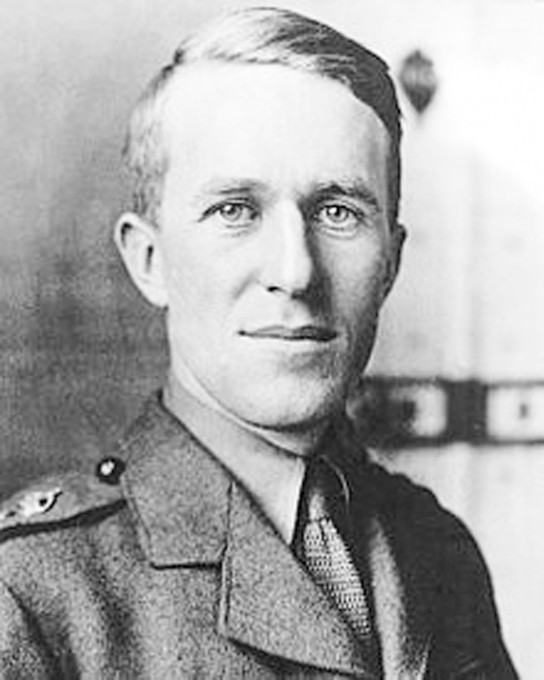
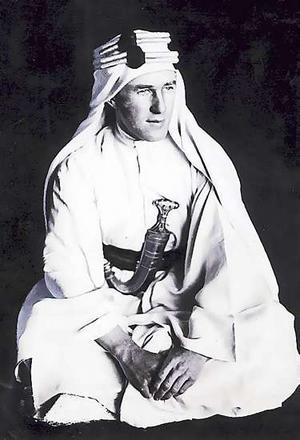
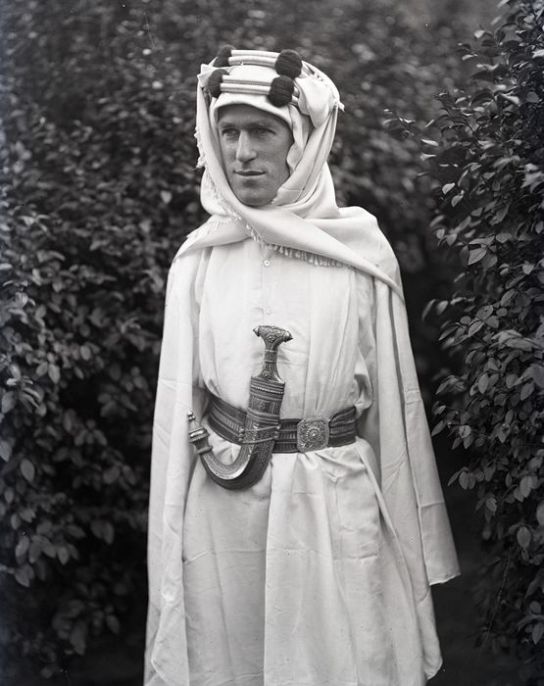
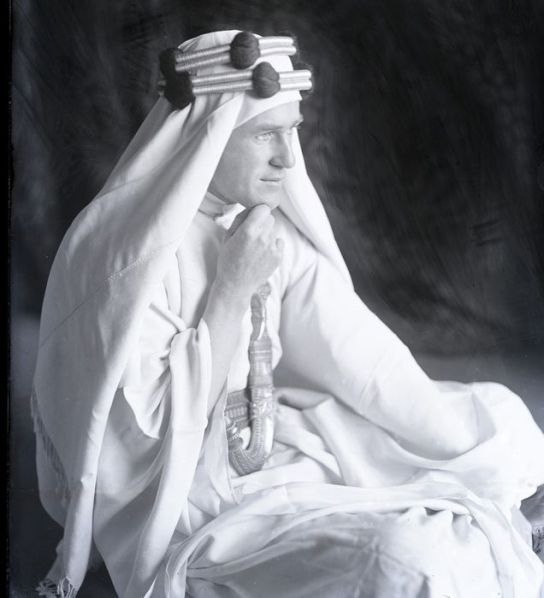
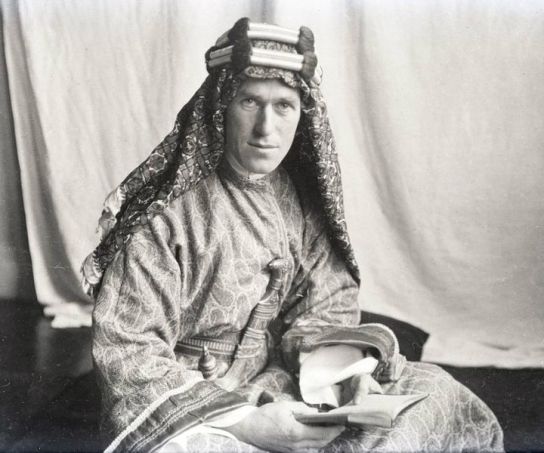
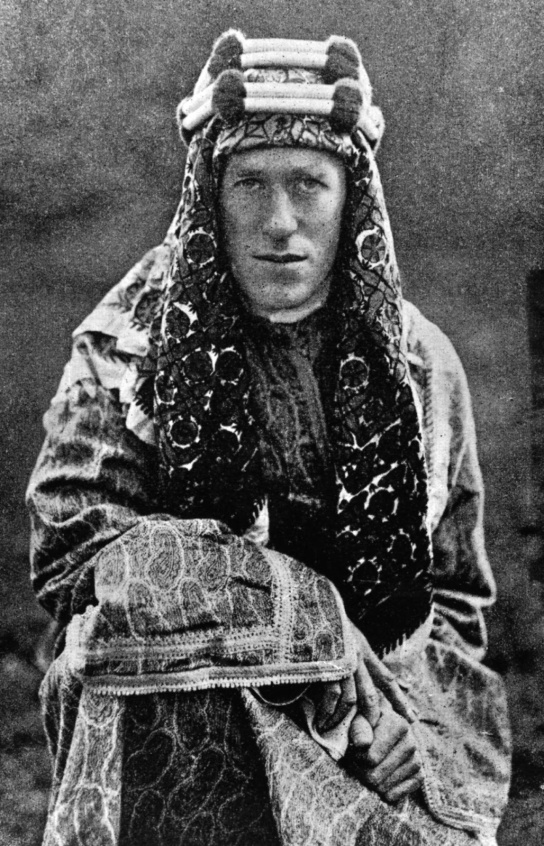
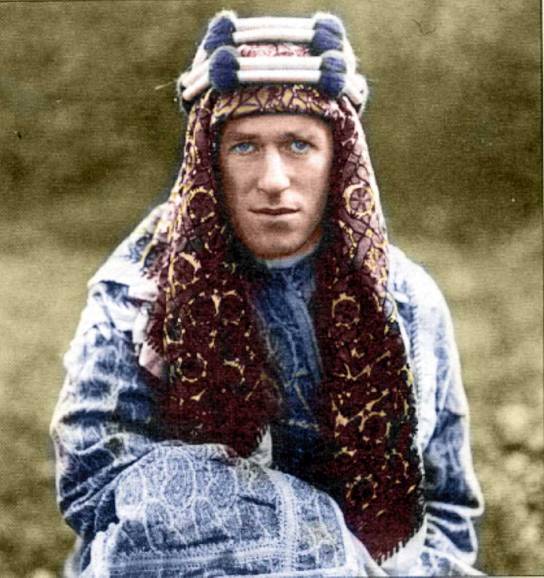
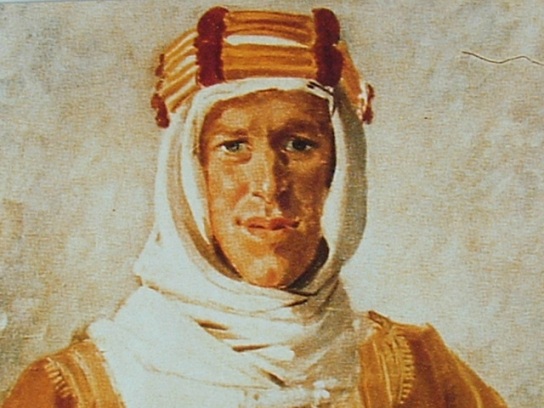

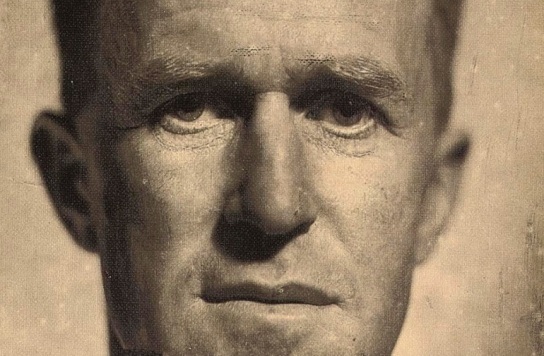
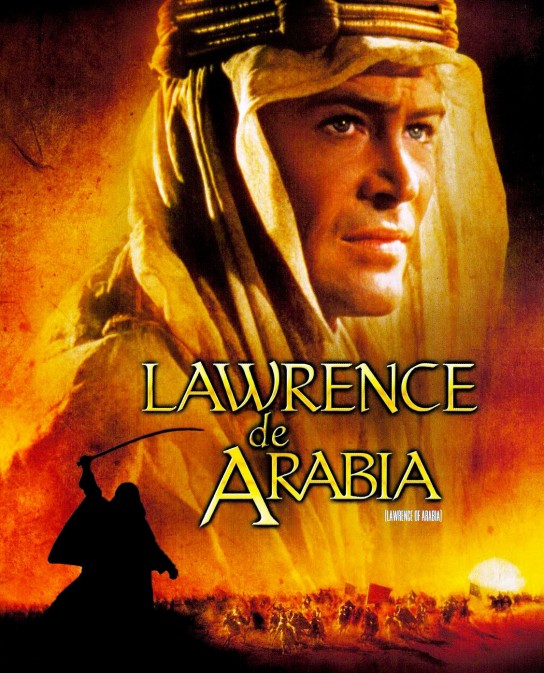











You must be logged in to post a comment.